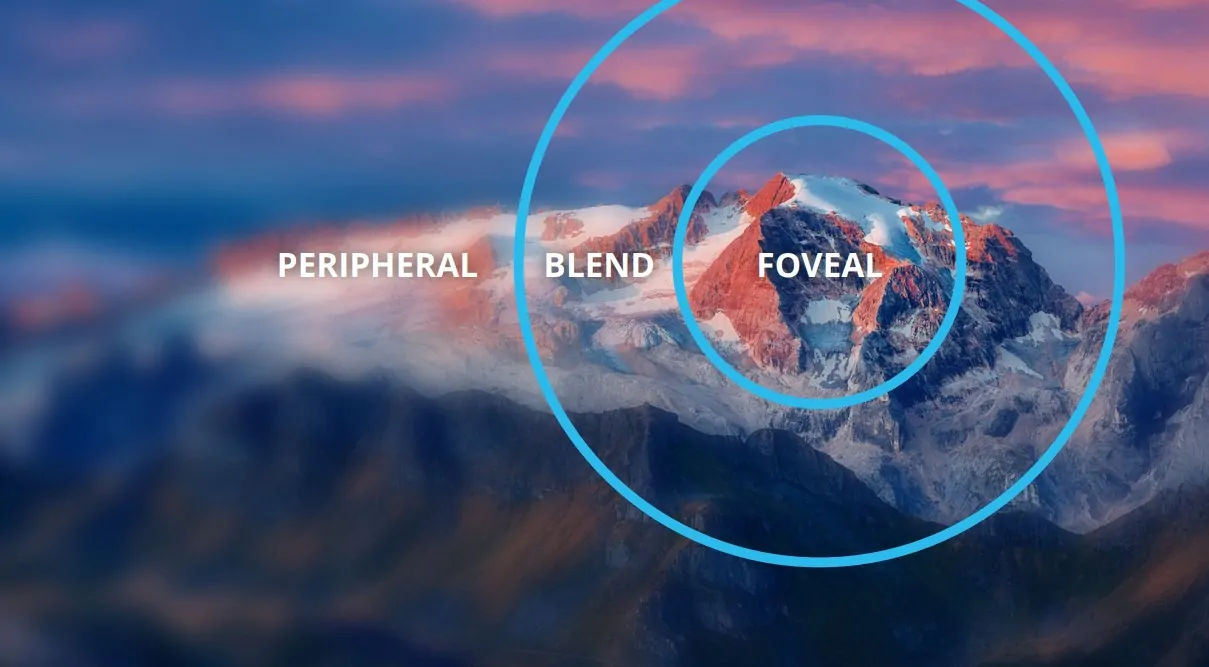Eye tracking is the way to future improvements in VR rendering technology, and is the key to reducing costs and the barrier of entry for most folks. Tobii has been the leader in eye tracking in the VR space and partnered with HTC on the launch of the Vive Pro Eye earlier this year. The Vive Pro Eye is an enterprise-grade headset with eye tracking capabilities that has been shown to enhance performance and detail, all while providing useful information to companies that create VR experiences.
Now Tobii is working to bring this same technology to future VR head-mounted displays (HMDs) with its Tobii Spotlight Technology; a set of tools that will enable developers and HMD manufacturers alike create those next-level experiences in the future. On a less technical level, this new technology uses something called ‘foveated rendering’ to create scenes that appear more natural to the human eye’s way of viewing the world.
Foveated rendering isn’t a new concept, but it’s one that isn’t implemented on a large scale yet and is most certainly the way to lower costs associated with the powerful equipment that’s been traditionally needed to run high-end VR experiences. In current VR experiences and games, a scene is rendered entirely as one “layer”, all in full resolution. The problem with this is that, as display panels become more pixel-dense with increased resolution, the hardware horsepower requirements have to increase in order to run the experience at an acceptable frame rate.
Foveated rendering changes that by rendering the experience in 3 “layers” instead. The innermost circular layer is rendered in the highest resolution, just as your eye “renders” the exact center of your vision in the highest detail. The next, much smaller layer is then rendered in a lower resolution than the previous layer, and the outermost layer is a very low resolution, mimicking the way peripheral vision works in an eyeball.
Since the vast majority of the scene in this situation is not rendered at full resolution, foveated rendering significantly lowers the need to have powerful hardware to run that experience. Tobii has released the results of a set of benchmarks that tally the difference in performance needed to run the same experience with foveated rendering toggled on and off. In this example, foveated rendering showed a reduction in processing load by 57%, meaning far less powerful computers and standalone headsets will soon be able to create more believable, detailed worlds.
Tobii’s platform for the benchmark included an NVIDIA GeForce RTX 2070 and an HTC Vive Eye Pro, since the requirements for the test include an HMD that has eye tracking abilities, as well as a GPU that is able to utilize Variable Rate Shading (VRS). NVIDIA built VRS into their RTX series GPUs, and even included a new VirtualLink Port on the back of many RTX cards to facilitate ease of connection for future VR HMDs.
Tobii’s new technology is vital to the improvement of VR experiences in the future, particularly standalone HMDs like the Oculus Quest, as it will significantly enhance the experience all-around for end users and help reduce the cost of these types of headsets. It’s also important for high-end headsets like the Valve Index, which utilizes a screen that can display at up to 144Hz, meaning only the beefiest computers will be able to fully utilize the display. Foveated rendering would help more PCs reach this metric, and many others as well.

